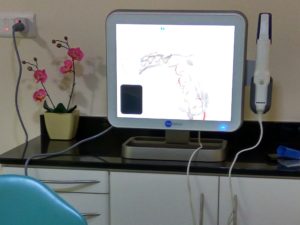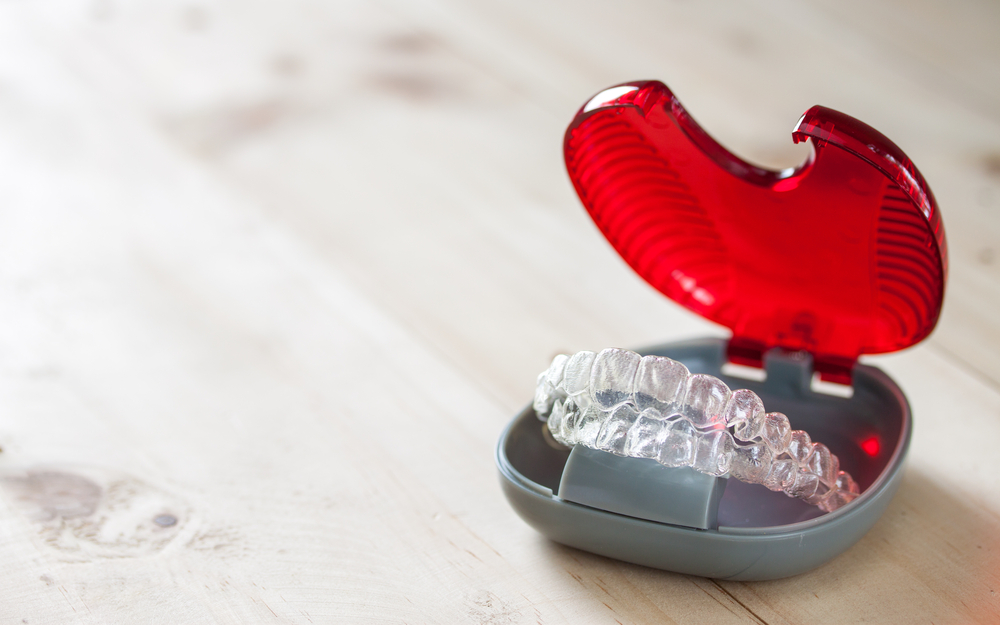Invisalign has perfected a lot of smiles. Considering how advanced, yet comfortable the technology is, it’s no wonder over 4 million people have opted for it worldwide. However, it’s important to know that orthodontics isn’t one-size-fits-all and understanding the advantages and disadvantages of Invisalign versus braces, as well as keeping in mind your own unique needs and diagnosis, will be the key to making an informed decision about your care. This guide will help if you’re trying to determine if you should opt for braces or Invisalign.

How Does Invisalign Work?
Before we get into the Invisalign pros and cons, let’s go over how the treatment actually works. Invisalign and Invisalign Teen involve clear, BPA-free plastic aligners that slip over your teeth like flexible, thin, see-through mouthguards. We at Smiles n More, use the itero intraoral scanner to take a digital impression of your teeth. With advanced computer technology, we’re able to create a 3D model of your mouth from the scan, x-rays and photos. Dr Divyashree moves each individual tooth into place directly on the 3D model using special software. Invisalign then produces a series of aligners based on the treatment specifications. With each set of aligners, the teeth move incrementally into their prescribed positions. When treatment is complete, you get to show off your brand new, beautiful smile.

The Advantages of Invisalign
- You can see your own Invisalign before and after pictures without even kicking off the treatment thanks to our Itero scanner. Not only do you get to skip the impression procedure, we’re able to show you a visual representation of what your smile will look like at every stage of the process, including the final product. This can be very motivating.
- The computer software we use to plan out your Invisalign treatment allows for serious precision. Dr Divyashree is able to make real-time adjustments directly on a 3D model of your mouth for a comprehensive treatment plan.
- The aligners are worn for about one to two weeks at a time and created at the onset of treatment based on doctors prescription. This means you know exactly how many aligners you’ll be wearing and how long the teeth-straightening process will take.
- The aligners are manufactured from smooth, flexible plastic and they’re extremely comfortable. There are no brackets and wires to potentially irritate your lips or cheeks and you don’t have to worry about cutting your mouth while playing sports or an instrument.
- Invisalign aligners are removable making them super convenient. Since you take them out to brush and floss your teeth, your oral hygiene routine will be exactly the same as it was before orthodontic treatment. You won’t need to maneuver around brackets and wires. Also, the fact that you don’t eat with them in your mouth means there are zero food restrictions.
- The aligners are virtually invisible, which is the most important benefit for a lot of patients. They’re clear and molded to your teeth so people aren’t likely to notice you’re wearing them. This allows adults and teens alike to continue on with their personal, professional and school lives without feeling self-conscious about their orthodontic hardware. Your smile won’t be covered by braces, which can enhance your confidence.
- You won’t need adjustments with Invisalign. You just move through your series of aligners. You’ll still come in for regular appointments so Dr. Divyashree can monitor your progress. However, over the course of treatment, this can equate to fewer visits and less time spent in the orthodontist’s chair. We understand how busy your lives are!
- You can whiten your teeth and use whitening toothpaste while rocking Invisalign. Braces patients have brackets covering parts of their teeth, which is why whitening isn’t recommended.
- A lot of patients end up snacking less since they have something in their mouth for the vast majority of the day and night. This is usually more of a perk for adults.
Disadvantages of Invisalign
- As Invisalign evolves, we’re able to treat more cases with it. However, at this point, it’s most effective for people with mild and moderate bite issues and not those with more severe problems. Braces can treat a wider variety of orthodontic cases.
- The first disadvantage of Invisalign is that it is not recommended for very young patients who may still have baby teeth in their mouths. Invisalign is designed to be used to straighten teeth only after all baby teeth have been lost and the permanent second molars have erupted. This normally happens in the early teens. So, if you have a baby tooth that has lingered long past its time you could still consult an Invisalign dentist.
- For maximum results, you do have to wear your aligners for 22 hours per day. Since you have to remove them to eat and drink anything aside from water and then you need to brush your teeth and clean your aligners before putting them back in, this puts a time limit on your eating and snacking. We mentioned this in the pro column too because a lot of adult patients like that it curbs snacking. However, for others, it can be a bit of a pain.
- Invisalign was first sold in the U.S. in 1999 and it hasn’t been around as long as braces treatment. Some people prefer a method that’s time-tested.
- You need self-discipline for the best results. It can be tempting to forgo wearing your aligners for a few hours here and there but that will stall your progress and create the need for additional aligners.
- Unlike braces, which are fixed orthodontic appliances, Invisalign is easy to lose unless you’re consistent about storing the aligners in their case. This can be more problematic for teen patients. On the plus side, Invisalign Teen does have some replacement aligners built into the treatment at no additional cost.
- If you’re deciding on Invisalign vs. braces, you should be aware that Invisalign sometimes requires enamel-colored attachments to do the job effectively. The attachments are cemented to the teeth and they stay put throughout treatment. They almost look like clear braces when your aligners are in your mouth.
- Because Invisalign orthodontics uses a series of custom-made trays ordered from the US company Align technology, rather than bulk-order brackets, wires, and rubber bands, your Invisalign treatment in India will cost way more than traditional braces. If you need to have your trays replaced or remade at any point during the treatment, this will increase your costs further.
Should I Get Invisalign or Braces?
While Invisalign features awesome materials and cutting-edge diagnostic and computer technology, it’s the behind-the-scenes planning that determines your Invisalign results. The treatment is only as good as the orthodontist who is mapping out the movements of your teeth (and the wearer themselves since compliance is key). Therefore, before even thinking about the Invisalign vs. braces topic, you’ll want to find a trained, certified and experienced provider (we happen to know one!). Once they do a thorough examination of your bite, they can determine which option is the best bet for achieving the results you want. Whether or not Invisalign will be more effective than braces, or vice versa, will really depend on your teeth situation.
If you’re interested in Invisalign and would like to find out if you’re a candidate, book a consultation at Smiles n More Orthodontics. Dr. Divyashree Rajendra is one of the top Invisalign providers in Bangalore with expertise in creating personalised fantastic smiles with the treatment. She is also committed to making orthodontic care, including Invisalign, affordable, which is why we offer exceptional service at a fair price and convenient payment plans to work for your budget. Contact us and let’s discover which treatment will give you a confident grin.

